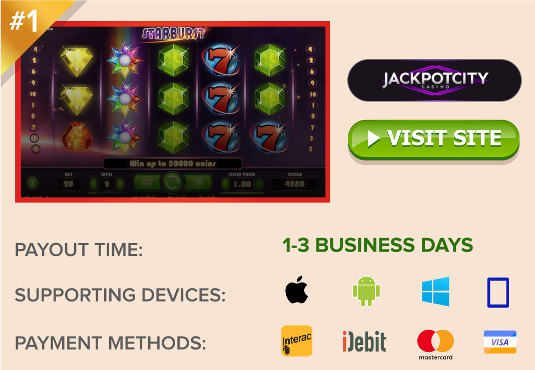Quantified Quandaries of Double Exposure 21
Pro player guide detailing how to play Double Exposure Blackjack with complete rules and play-by-play strategy.

What would you do if you could see both of the dealer’s cards in a blackjack game? Maybe you’d shake in your boots, afraid of being caught cheating in a casino? Perhaps you’d smile smugly, musing silently to yourself about your wild psychic abilities that are sure to break the casino’s bank. More likely, you’d be playing Double Exposure Blackjack.
That’s right, in this 21 variant, the dealer purposely shows both of his cards. Before you get too excited, I should point out that other rules are in place to keep the edge from falling into the player’s favor. As a trade off, you’ll have to accept limited doubling on hard totals of 9-11, losing all ties (except blackjack), and an even money payout for a natural 21.
How to Play Double Exposure Blackjack
To play this comparably player-friendly game, the first thing you’ll want to do is find it on the menu at a reputable Microgaming-powered online casino. If you play it elsewhere, or by any other name (a.k.a. Face Up 21), the rules won’t be so hospitable to players.
To the best of my knowledge, with basic strategy applied, only the Microgaming version affords a generous 99.68% RTP (0.32% house edge). How does Microgaming get the edge so low? By scheduling the following rules of play for the dealer and players.
Specific Rules of Play
- Decks: 8
- Soft 17: Dealer Hits
- Doubling: Yes, on Hard Total 9, 10 or 11 only
- Splitting: Yes, 3x
- Double after Split: Yes
- Resplit Aces: No
- Draw to Split Aces: No
- Surrender: No
- Dealer Checks for Blackjack: No
- Tie for Blackjack: Player wins
- All other Ties: Players Loses
- Blackjack Pays: 1 to 1
Double Exposure Strategy Charts
Most strategy charts are small and simple to understand. Then again, most blackjack games don’t let you see the dealer’s exact hand. Since you can in Double Exposure Blackjack, the strategy charts become a lot more extensive in their situational evaluations, especially when it comes to hard and soft totals.
For reference:
- A hard total is a hand that does not have an Ace that counts as 11.
- A soft hand is one that does contain an Ace valued at 11.
There are three sections below, split up by Hard Hands, Soft Hands and Paired Hands. These topics relate to the player’s hand, not the dealer’s. Each of these sections contains two charts; one for the dealer’s Hard Hand, and another for the dealer’s Soft Hand.
Be sure you’re looking at the right chart for each hand to ensure you are playing for the lowest, most hospitable house edge of 0.32%.
How to Decide a Player’s Hard Hand
When the Player and Dealer both have Hard Totals, follow this chart.
| Player’s Hard Total | Correct Action According to Dealer’s Hard Total |
| 5-7 | Double against 14-16; otherwise Hit |
| 8 | Double against 12-16; otherwise Hit |
| 9 | Double against 5-6 or 12-16; otherwise Hit |
| 10 | Double against 4-8 or 12-16; otherwise Hit |
| 11 | Double against 409 or 12-16; otherwise Hit |
| 12-13 | Stand against 4-6 or 12-16; otherwise Hit |
| 14 | Stand against 4-6 or 11-16; otherwise Hit |
| 15 | Stand against 4-6 or 10-16; otherwise Hit |
| 16 | Stand against 4-6 or 8-16; otherwise Hit |
| 17 | Stand against 4-16; otherwise Hit |
| 18 | Stand against 4-17; otherwise Hit |
| 19 | Stand against 4-18; otherwise Hit |
| 20 | Stand against 4-19; otherwise Hit |
| 21 | Stand |
When the Player has a Hard Total and the Dealer has a Soft Total, follow this chart.
Note: Dealer’s Soft Total rules apply only to dealer hand values of up to 17 (i.e. hands the dealer must hit). If the dealer’s total if 18+, refer to the chart above (i.e. you must hit when your total is lower.)
| Player’s Hard Total | Correct Action According to Dealer’s Soft Total, up to 17 |
| 5-9 | Hit |
| 10 | Double against 14-16; otherwise Hit |
| 9 | Double against 13-16; otherwise Hit |
| 10 | Double against 4-8 or 12-16; otherwise Hit |
| 11 | Double against 409 or 12-16; otherwise Hit |
| 12 | Stand against 14-16; otherwise Hit |
| 13-17 | Stand 12-16; otherwise Hit |
| 18-21 | Stand |
How to Decide a Player’s Soft Hand
When the Player has a Soft Total and the Dealer has a Hard Total, follow this chart.
| Player’s Soft Total | Correct Action According to Dealer’s Hard Total |
| 13 | Double against 12-16; otherwise Hit |
| 14-15 | Double against 6 or 12-16; otherwise Hit |
| 16-17 | Double against 5-6 or 12-16; otherwise Hit |
| 18 | Stand against 7 or 17; Double against 4-6 or 12-16; otherwise Hit |
| 19 | Hit against 19-20; Double against 12-16; otherwise Stand |
| 20 | Hit against 20; Double against 13-16; otherwise Stand |
| 21 | Stand |
When the Player and Dealer both have Soft Totals, follow this chart.
Note: Dealer’s Soft Total rules apply only to values of up to 17 (i.e. hands the dealer must hit). If the dealer’s total if 18+, refer to the chart above (i.e. you must hit when your total is lower.)
| Player’s Soft Total | Correct Action According to Dealer’s Soft Total, up to 17 |
| 13-17 | Hit |
| 18 | Stand against 17; otherwise Hit |
| 19-21 | Stand |
Conditions for Splitting Pairs
Paired hands can get tricky. Pay close attention to the chart below and you’ll learn exactly how to play Double Exposure Blackjack when faced with a pair against the dealer’s hard or soft hand total.
Utilize this first chart with a Player Pair against Dealer’s Hard Total.
| Pair | Correct Action According to Dealer’s Hard Total |
| Ace-Ace | Split against 4-10 or 12-16; otherwise Hit |
| 2-2 | Split against 4-6 or 12-17; otherwise Hit |
| 3-3 | Split against 4-6 or 12-17; otherwise Hit |
| 4-4 | Split against 6 or 12-16; otherwise Hit |
| 5-5 | Double against 4-8 or 12-16; otherwise Hit |
| 6-6 | Split against 4-6 or 12-17; otherwise Hit |
| 7-7 | Stand against 11; Split against 4-6 or 12-17; otherwise Hit |
| 8-8 | Stand against 9-11; Hit against 18-20; otherwise Split |
| 9-9 | Stand against 7, 9-11 or 17; Hit against 19-20; otherwise Split |
| 10-10 | Split against 13-16; Hit against 20; otherwise Stand |
Use this second chart with a Player Pair against Dealer’s Hard Total.
Note: Dealer’s Soft Total rules apply only to values of up to 17 (i.e. hands the dealer must hit). If the dealer’s total if 18+, refer to the chart above (i.e. you must hit when your total is lower.)
| Pair | Correct Action According to Dealer’s Soft Total |
| Ace-Ace | Split |
| 2-2 | Hit |
| 3-3 | Hit |
| 4-4 | Hit |
| 5-5 | Double against 14-16; otherwise Hit |
| 6-6 | Split against 14-16; otherwise Hit |
| 7-7 | Stand against 12-16; otherwise Hit |
| 8-8 | Stand against 12-15; otherwise Split |
| 9-9 | Split against 15-16; otherwise Stand |
| 10-10 | Stand |
 Jackpotcity.com is our editorial pick for your gaming needs. Currently offering an entire suite of casino games, as well as a wide range of Canadian deposit options, JackPotCity truly offers world-class gaming.
Jackpotcity.com is our editorial pick for your gaming needs. Currently offering an entire suite of casino games, as well as a wide range of Canadian deposit options, JackPotCity truly offers world-class gaming.





